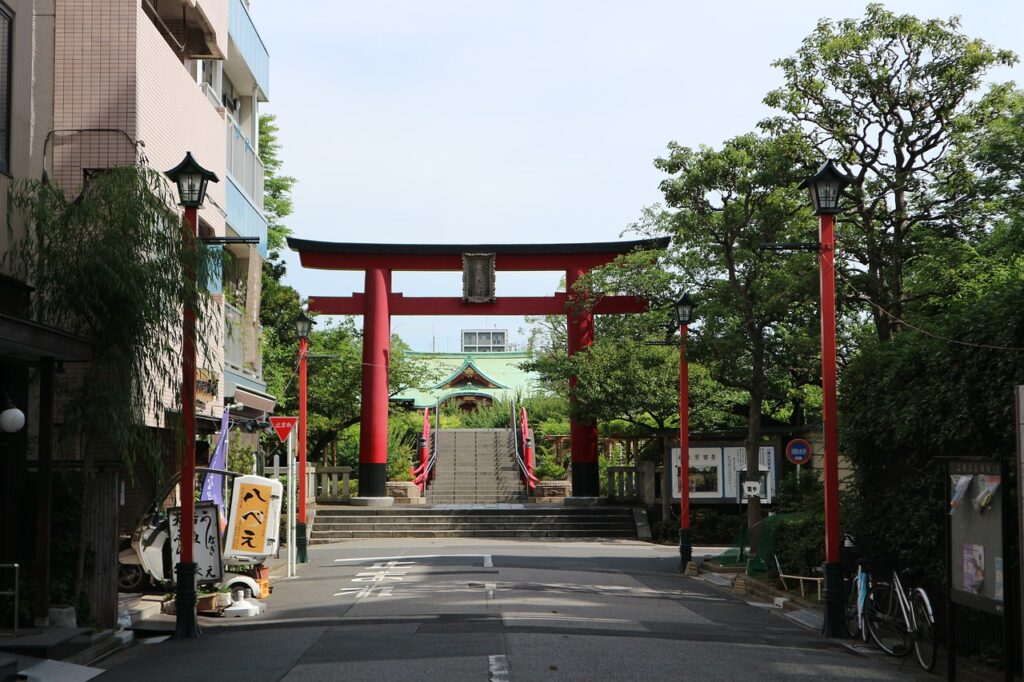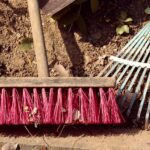
Beans, Pigeons, and a Shrine
Kameido, Koto Ward. Walk straight down the shopping street from the station, and where Meiji-dori and Kuramaebashi-dori intersect, pigeons are repeatedly dive-bombing a corner bean shop. Just a bit further on the left is the headquarters of a major pet shop chain often seen in shopping malls. I was fortunate to be assigned to this company, and the president—a former banker—personally agreed to meet with me. At the time, I was still young, drank heavily, and smoked. I used to sneak a cigarette in a nearby alley before appointments. I remember the pet shop president once scolded me, saying, “You reek of smoke!” Since then, I resolved never to smoke before visiting a client.
At that time, Febreze-like products had just started to appear, and imported versions were sold at places like Sony Plaza. A small portable bottle cost 500 yen, and I used to carry a few around. However, the imported ones had such strong, fabric-softener-like scents that they ended up offending people in a different way—it was a trade-off.
I visited Kameido many times. Aside from this pet shop and a mid-sized general contractor, most of the businesses I visited were small local real estate agencies and construction firms. The general contractor had once been surrounded by shady rumors, but I later learned they had worked on the library at the university in my hometown. Since then, I’ve quietly rooted for them. Companies like Akita-ya, which I mentioned in a previous blog, are also central to the image I have of Kameido.
The Commercial Building
That same Kameido also has a shopping street on the other side of the station, now featuring a Don Quijote store. In the past, there was a suburban-style shopping mall in that area, but I found out it has since closed. The focus of this story is a commercial building located a short walk down the highway from there. It’s an unremarkable building, but young investigators would end up visiting it repeatedly.
The Investigation Begins
That building in Kameido—hardly what you’d call central Tokyo—was home to more than 500 companies. Looking back now, I get it, but the first time I investigated it, I was stunned.
That morning at the office, I checked my assignments and saw two companies located in Kameido:
- “Nakamura Real Estate No.1 Ltd.” (pseudonym)
- “Nakamura Real Estate No.4 Ltd.” (pseudonym)
“What is this, some kind of Apollo mission lineup? Company No.1 and No.4 ready for launch?”
The names were obviously suspicious, but the commercial registry was properly documented, so they were legally valid companies. Both were recently established real estate management firms. Same Kameido address. Same representative. Capital in the billions of yen.
“Wow! These are big players—this could turn into a great deal!” I thought, excited to start the investigation. But there was no contact information—no phone numbers, not even for the representative’s home. I had no choice but to visit the site in person, thinking, “Maybe I’ll swing by the pet shop on the way back.”
When I opened the glass door, on the left-hand side was a steel mailbox panel. “Now, which floor is our rocket launching from?” I joked as I scanned the nameplates—and there they were!
- “Morgan Stungan No.1 Ltd.”
- “BarclayPunk No.8 Ltd.”
- “Nakamura Real Estate No.1 Ltd.”
- “Saito Real Estate Investment No.5 Ltd.”
- “Special Purpose Company Ariake Development No.3, No.8…”
Each mailbox slot was filled with tiny-font company names—printed with a label maker. I went to the listed floors, but they were pitch dark. No sign of office activity. Dazed, I went back to the mailboxes and started copying as many names as I could into my notebook. “You suspicious bunch—I’ll get to the bottom of this!” I thought, diligently jotting them down.
The Business of Real Estate Securitization
On-site, I gathered no further information aside from the company names. I couldn’t identify the building’s management company either, so the investigation hit a dead end.
“Senpai, about that building in Kameido… there are hundreds of companies there.”
“Oh, that’s the SPC place,” came the reply. That was the first time in my life I heard the term “SPC” (Special Purpose Company).
As always, my senior was a wealth of knowledge when I was stuck.
In the end, these suspicious companies were all linked to real estate transactions—buying, managing, leasing—under the umbrella of “real estate securitization,” and categorized as SPCs, including special purpose companies. Back then, limited liability companies were often used, but nowadays SPCs are the standard.
Companies involved in real estate development or investment funds use these structures to keep large assets off their own balance sheets. Instead, they spin off new companies—SPCs—for each project. (Some investment execs even used the term “vehicles.”) These SPCs often have massive capital or assets, but they do no actual business—they just hold real estate.
I received a few more investigation requests involving SPCs in Kameido later on. Some of them were officially disclosed in the government gazette or listed in securities reports as “SPC holding XXX property,” making it easier to report back to clients. But most remained completely anonymous shells. I can imagine how uneasy the requesting clients—usually general contractors—must have felt.
Why did so many SPCs concentrate in that Kameido building? I don’t know. Perhaps the building owner was unusually tolerant of such tenants, unlike most landlords who would be wary.
Tax Havens
After moving away from domestic credit research, I started supporting clients through overseas company investigations. A common type of concern I hear involves tax havens. Places like the Cayman Islands and the British Virgin Islands host companies in much the same way as Kameido—registered only on paper.
These companies benefit from local tax advantages but are effectively based in the U.K. or the U.S., where they do business with Japanese firms. When it comes time to sign a contract, suddenly the paperwork lists the Cayman Islands or BVI, which surely surprises the Japanese side. (I even once got a request to take photos of a suspicious Seychelles paper company.)
NHK once ran a special on tax havens, showing idyllic beaches perfect for summer vacations. Along those beaches were ramshackle buildings said to house tens of thousands of companies. The office entrance was blurred on screen, but I could imagine it clearly—it had the same steel mailbox panel as Kameido.
Changing Tokyo
Back to Kameido again—at the time I was visiting, money was circulating strangely. Traditional industries were being joined by trendy “dot-com” IT companies, and financial engineering and securitization businesses were taking hold.
Looking at Tokyo now, transformed over the past 20 years, it’s clear that real estate securitization led to astronomical investments, creating immense wealth and the commercial buildings and condos we live and work in. Of course, behind every real estate project are land acquisition specialists, architects, and others—land acquisition itself is a fascinating world, but that’s a story for another time.



